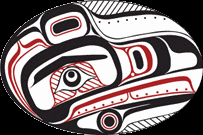Books that feature FNMI writing and illustrating
Although these titles often fit an American context more than a Canadian one, there are some good titles to explore. (The 2016 list is here.)
"The American Indian Youth Literature Awards are presented every two years. The awards were established as a way to identify and honor the very best writing and illustrations by and about American Indians. Books selected to receive the award will present American Indians in the fullness of their humanity in the present and past contexts."
==========





